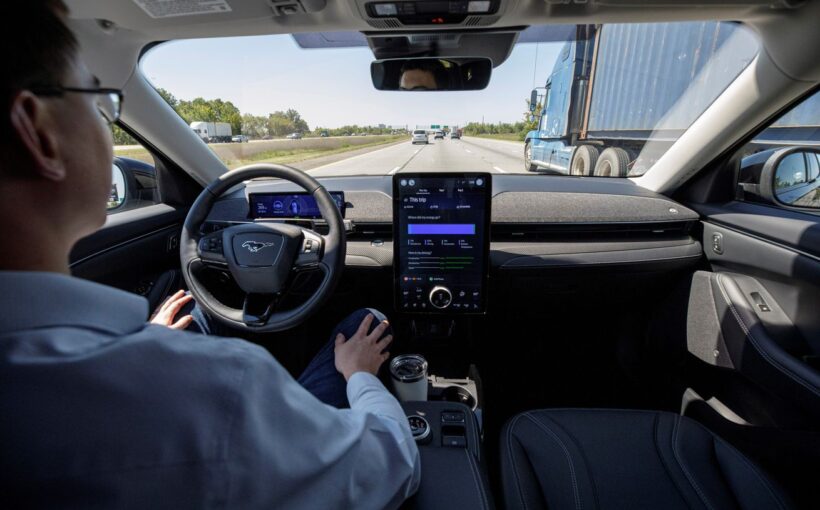
Ford announced the creation of a new wholly owned subsidiary called Latitude AI to lead its efforts to develop a hands-free, eye-off, unsupervised driving system. The company has rehired about 550 employees from Argo AI, the autonomous vehicle operator that shut down last year after Ford pulled its funding.
Latitude AI will be based in Pittsburgh, which is where Argo AI was previously headquartered and has emerged in recent years as a hub of AV research and startups. Additional engineering hubs will be set up in Dearborn, Michigan, and Palo Alto, California. The company also will operate a highway-speed test track facility in Greenville, South Carolina.
Latitude AI will be based in Pittsburgh, which is where Argo AI was previously headquartered and has emerged in recent years as a hub of AV research and startups. Additional engineering hubs will be set up in Dearborn, Michigan, and Palo Alto, California. The company also will operate a highway-speed test track facility in Greenville, South Carolina.
Ford is tapping its executive director of ADAS technologies, Sammy Omari, to serve as CEO of Latitude AI and Peter Car as chief technology officer, overseeing Latitude’s product and technical development.
:format(webp)/cdn.vox-cdn.com/uploads/chorus_asset/file/24473298/Latitude_01.jpg)
The company will focus on enhancing and leveraging products such as Ford’s BlueCruise advanced driver-assist system. BlueCruise is a Level 2 system, meaning the vehicle controls major functions like acceleration and braking, as well as lane centering and automatic lane changing. But while drivers can take their hands off the steering wheel and feet off the pedals, they need to keep their eyes on the road and be ready to take control at a moment’s notice. Ford said that BlueCruise-equipped vehicles have already traveled a total of 50 million miles.
When Argo AI shut down, Ford said it would shift its spending from Level 4 driverless technology to Level 2 and Level 3 driver-assist products. “We’re optimistic about a future for L4 ADAS, but profitable, fully autonomous vehicles at scale are a long way off and we won’t necessarily have to create that technology ourselves,” Ford CEO Jim Farley said at the time.
To be sure, Level 4 autonomous vehicles are enormously expensive to develop and maintain. And the return on that investment keeps getting pushed further into the future, with many operators insisting on a need to move slowly as the technology matures. Today, several hundred autonomous vehicles associated with companies like Waymo, Cruise, Zoox, and Motional are operating in half a dozen cities, with only a small percentage actually bringing in revenue from ridehail trips.
In Ford’s view, it would rather collect monthly ADAS subscription fees from its millions of customers than wait years — or potentially decades — for an urban robotaxi service to begin generating profits.
Still, the shuttering of Argo AI sent shockwaves through the industry, as Ford was one of the first big automakers to give voice to the growing pessimism around AVs. (Volkswagen was also a major funder of Argo.) Meanwhile, Argo’s main rivals, Waymo and Cruise, have gone through major leadership shake-ups. Valuations have dropped as timelines have stretched further and further out. Companies that went public by SPAC have seen their share price tumble. The costs have grown while revenues have been slow to trickle in.
Ford isn’t the only automaker to bet big on driver-assist technology. Mercedes-Benz and Volvo are investing heavily in unsupervised highway driving features, which include using long-range lidar laser sensors to enhance the vehicle’s object detection abilities. And GM has said its Ultra Cruise system will work in 95 percent of driving scenarios. Ford has yet to announce any lidar-equipped vehicles of its own, but no doubt Latitude AI will be involved in any future announcement.



